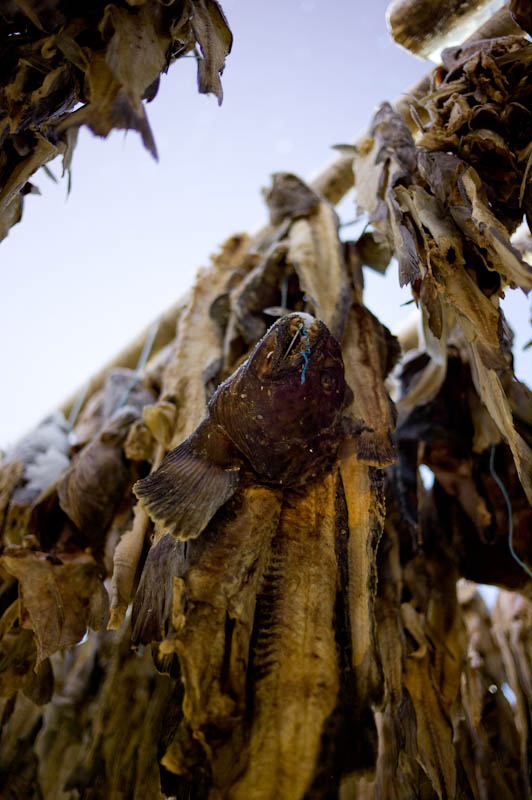Forum Replies Created
- August 5, 2011 at 9:49 pm #737
Never had a single problem! I have a San Disk Extreme HD Video 8gb card. It is a 20mb/s card. Not so fast, perhaps, but it seems to work fine for me. I think I will stick with it until the problems are all sorted…
- July 31, 2011 at 8:15 pm #698
Very interesting! I am sharpening purely on a visual basis, and for a print based workflow. One of the great things about lightroom is how by holding down the option button while moving the sliders, they give you a visual cue as to how the sharpening is being applied. This helps you dial it in, and then you can fine tune it using the regular adjustments. I have found that when using the detail slider, it accentuates the grain quite a bit more than I generally like and sometimes imparts a texture that I find unnatural. I have had the same qualms about smart sharpen, so it all makes sense to me now! Still, it is very nice to know how it all works.
- July 31, 2011 at 12:09 pm #693
Thanks for the work and the samples Josh. It was nice to see your sharpening technique as well. It's funny how different they can be. For example, with the M9 (and probably eventually the S2) I tend to rely on high masking, minimal radius and detail, but a higher level on the sharpening slider. It's more of an edge sharpening effect than overall sharpening, as the files themselves are already very sharp. Your work with luminance noise reduction has also led me to consider trying it — in the past I have avoided it because I usually feel like the trade off in detail loss is not worth the lower noise, but here it seems to be working very well. I will say too, that the S2 at a virtual 800 looks brilliant.
I am interested in another situation though — long exposure. You did some very nice long-exposure shots with the 350mm Superachromat. How do you find the S2 does in terms of noise in long exposure? I think the M9 did a rather nice job, but it would be great if the S2 could do it as well. I would be more likely to use the S2 in a long exposure situation than in a low-light handheld situation (though it is nice to have the capability).
For example, this is a one minute exposure with the M9, lit only by moonlight:

This one was 177 seconds! I needed a flashlight to focus, that's for sure. What is the upper limit of the S2 now? I know it was recently lengthened…

And you still get some detail…noise is not bad. This was shot at f/1.4, and there is probably slight motion from the wind etc which leads to softening.

We only get about 3-4 hours of light a day in the winter here, so long exposure makes a difference! The M9 has great color in long exposures, which is something that usually suffers. I was surprised how good it was. I normally use the D3 for this, but since I am selling the Nikon kit to build funds for the S2, it would be nice if the S2 could replace it!
- July 31, 2011 at 12:12 am #687
Thanks David — yes, the 350mm is one reason I am interested. I am sure the Leica will be the most solid, but the Metabones is interesting to me because I have one of their Leica M to m4/3rds adapter, and it fit perfectly and was very well made. Given the price, I might give it a shot and if it does not work well, I can return it and just get the Leica version. Between 600 and 850, I would go for the Leica, but between 300 and 850 it's a different story…
I am coming into the S2 from a Hasselblad 200 series film setup, and I have several lenses that might be good to use on adapters. For example, the 350mm f/4 FE. I will only have the 35mm and 120mm S2 lenses, so there might be times where it will be nice to use a 50mm f/2.8, 80mm f/2.8 or my 180mm. The other lens I have is the 110/2, and while I absolutely love it (it is my most used lens on the 200), I imagine that the 120mm is going to take that lens out of regular use…
I have used the 350mm FE on a Nikon D3, and it was spectacular when using only the best part of its image circle…I imagine it will also be excellent on the S2. It has some CA, but it is a sharp lens with a nice look…great speed and close focus for a lens that long as well (it focuses to 1.9m in the FE model!). The biggest problem with the lens is getting a tripod secure enough to keep it held without vibration. I think the adapter quality and fit is really important too…it needs to stably carry the weight of the whole camera body without flexing. - July 30, 2011 at 10:13 pm #684
The premium is 550 dollars over the Metabones adapter! I would not call it that small!
I posted a thread about this though…I am curious if anyone has used the other adapters, and if so, how they compare. - July 30, 2011 at 8:37 pm #683
The only thing I regularly use is a built-in grip case from Luigi at Leicatime…I originally bought it with the M8 a few years ago. Beyond that, I just use a RRS plate with the grip for when I am doing a lot of tripod work. I don't really think the M9 needs many accessories, to be honest! That's the beauty of the camera…it really works perfectly without too many add-ons…
- July 26, 2011 at 1:09 am #655
Still shooting lots of film here (I do run a photo lab though). I just recently put up some film shots from a trip out East — they are either Hasselblad or a Plaubel Makina…you can tell by the format…
http://www.stuartrichardson.com/lightroom/east-trip-film-shots-2011/ - July 24, 2011 at 1:00 am #648
They are very, very tempting, but since I am looking at the S2, I decided to just get an SSD for my older Macbook pro. Hopefully that will give it another year or two. I also love the size and portability of the Macbook Air, but I would really miss the things you lose in going with that form factor (or what you seem to lose each time the MBP is upgraded!), for example, the optical digital output in the headphone jack (great for hooking up to a DAC for good audio or for playing movies from the computer), Firewire 800 (I guess you can eventually get an adapter for the thunderbolt port), and a simple ethernet connector. Those are all things I have used in the last week (except for ethernet cable, which I used a few weeks ago), so I know that adjusting to the fewer ports would be a bit annoying. Also, one USB is not that generous…if you are using a USB 3g device, for example, you can't plug anything else in…
I am sure there are work-arounds for most all of these, and I keep wanting a smaller computer for my general use, but then when the reality of the downsizing hits, I realize I am probably better off sticking with the 15″ MBP. - July 19, 2011 at 9:22 am #616
Agreed — a 1.4x makes perfect sense, as the lenses are so fast anyway, that losing one stop is not a barrier to a useful lens. Based on my experience with the 2x APO converter for the R system, I know they can make a tele-converter that does not seriously harm the optical performance. The 180mm Elmarit and 2x APO converter still performed spectacularly well, even wide open. Perhaps they fear that if they have a TC they won't sell as many lenses?
Still, for me I think a lens adapter and a longer Hasselblad lens will be my choice…I will not use it enough to make it worth buying either a TC or long Leica lens. 120 should be enough for me…
- July 12, 2011 at 11:25 pm #567
Well, perhaps this is not quite what you asked, but I think this is one of those obvious things that gets overlooked… As Marc said, you need to be careful not to overuse flash unless it is studio lighting or something where the flash is the primary illumination.
The problem with flash outside is that you are creating another sun. Whether we are aware of it consciously or not, we have spent our entire lives looking at people lit by a single giant light source in the sky. So when we see a photo that is illuminated from two different sources, it almost always looks somehow unnatural unless it is very carefully done. This is why if you overdo fill light, it will look like your subject matter has been pasted onto the background — the lighting does not match up!
The people who use flash successfully either learn how to hide this effect (toning down the amount of fill flash, making the angle of incidence closer to the sun etc), or they play it up and go for pictures that are clearly artificially lit, and therefore don't generate that “what is wrong here?” feeling, because people already know it is a construction rather than a faithful reproduction of the scene.
My best advice would be to incorporate flash when you need it, but pay a lot of attention to the ambient lighting situation and try your best to work with it, rather than to bend it to your will. Often something as simple of turning someone so they are sidelit or putting them closer to an object that provides natural fill (a white wall etc) will solve many of the issues where people find they resort to flash.
- July 9, 2011 at 4:15 pm #546
Thank you both! Glad to hear that it is still in the works and that it is nice to use. I look forward to hearing some user impressions once it gets into people's hands.
- July 9, 2011 at 12:05 pm #542
David K;231 wrote: Hey Doug… please don't tell us that you're giving up the DMR. You've been making such gorgeous photos with that camera and the 280mm for so long…and I never tire of seeing them. It may be a bit outdated and out-res'd by some of the newer stuff but it can still deliver the goods. Looking forward to seeing you share some images over here… whatever you shoot them with.
Yes, agreed! But did you watch that interview with Peter Karbe on Luminous Landscape? I liked the part where he suggested the performance of the 120mm at infinity would be on par with 280mm. It must be a staggeringly good lens…
As for the firmware suggestions, the noise reduction function sounds ideal. So ideal, in fact, that if it was easy to implement I am sure they would have done so already. Did Dr. Zimmer mention why they had not implemented this? It seems to be an obvious benefit to photographers if it is something that is possible to put into firmware.
Same goes for smaller steps in the ISO — I agree it would be a nice feature, but doesn't each ISO setting require individual tailoring in the camera firmware? I guess that is a lot of work. My suspicion is that they did not offer incremental values because it would have required more programming time, while not being a big issue for most photographers. I agree it would be very convenient, however…For example, I often shoot film alongside digital, and being able to synchronize the meters at 100, 400, or 800 is simply a little less confusing than having one camera at 100 and another at 160.

